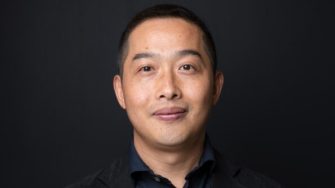Meet our WRC Researcher
Professor Bing-Jie Ni
Professor Bing-Jie Ni

A professor in the Water Research Centre and a former ARC Future Fellow, Professor Ni started his research career developing novel technologies to handle wastewater and municipal waste.
By 2030, global fresh water demand is expected to outstrip supply. Around the world, scientists and engineers are scrambling to develop novel solutions that will meet the world’s water needs without worsening the climate crisis.
Professor Bing-Jie Ni is among them.
A professor in the Water Research Centre and a former ARC Future Fellow, Professor Ni started his research career developing novel technologies to handle wastewater and municipal waste.
But he soon realised that many of the treatment processes that were producing clean water were wreaking havoc on the environment.
“Greenhouse gas emissions, including nitrous oxide and methane carbon emissions, are all produced as a by-product of many traditional wastewater treatment processes,” he says.
“My research started to transition from traditional treatment technology to emission quantification and mitigation.”
Today, Professor Ni is internationally acclaimed for modelling and mitigating the greenhouse gases produced by traditional wastewater management systems. In 2015, he developed a nitrous oxide emissions model that caught the attention of the Intergovernmental Panel on Climate Change (IPCC); in 2019, the agency applied his findings to their updated National Greenhouse Gas Inventories Guideline.
He has also led the development of biological treatment approaches that use microscopic organisms to break down the sewage sludge left over from treatment processes. This process reduces the release of greenhouse gases and other emissions that are produced during these processes.
The next step is to transform the sludge itself into a novel bioenergy source that has negligible impact on the environment.
“We can’t achieve 100 per cent emissions reduction, because there will always be some emissions that result from these processes, but we can offset them by turning sewage sludge into bioenergy,” he says.
“We propose a novel biotransformation of sewage sludge to medium-chain fatty acids, which are very high-value products that can be very easily separated from water and that we can collect very efficiently and at low cost.”
As part of this work, Professor Ni is also turning his attention to one of the most pressing problems of contemporary environmental engineering: microplastics. His research has already shown that increasing quantities of microplastics in the wastewater sludge can both damage water treatment systems and reduce the effectiveness of bacteria assigned to break down waste products.
To this end, he and his team are exploring the use of a material called biochar to separate plastic particles from wastewater and sewage sludge. Biochar is the carbon-rich substance left over when organic materials are subjected to high heat in zero oxygen environments.
For his efforts, Professor Ni been named a leader in water supply and treatment research in the 2024 Research listing from The Australian, one of the fastest-rising researchers of 2023 by the prestigious Nature journal, and a 2018 Most Innovative Engineer, courtesy of Engineers Australia.
He is also recognised as a highly cited researcher by the Clarivate Analytics Web of Science and the Royal Society of Chemistry and is among the top 2 per cent of cited researchers in the world, according to Mendeley Data.
Collectively, Professor Ni’s research is all working towards the same goal: to shift the focus of global wastewater systems from treatment to resource recovery in service of a greener future.
“I think it starts with the water sector,” he says.
“If we can offset the sector’s remaining direct emissions of greenhouse gas by recovering valuable resources and energy from the system, then we can propose a next-generation water treatment system that will allow the whole sector to achieve zero emissions.”